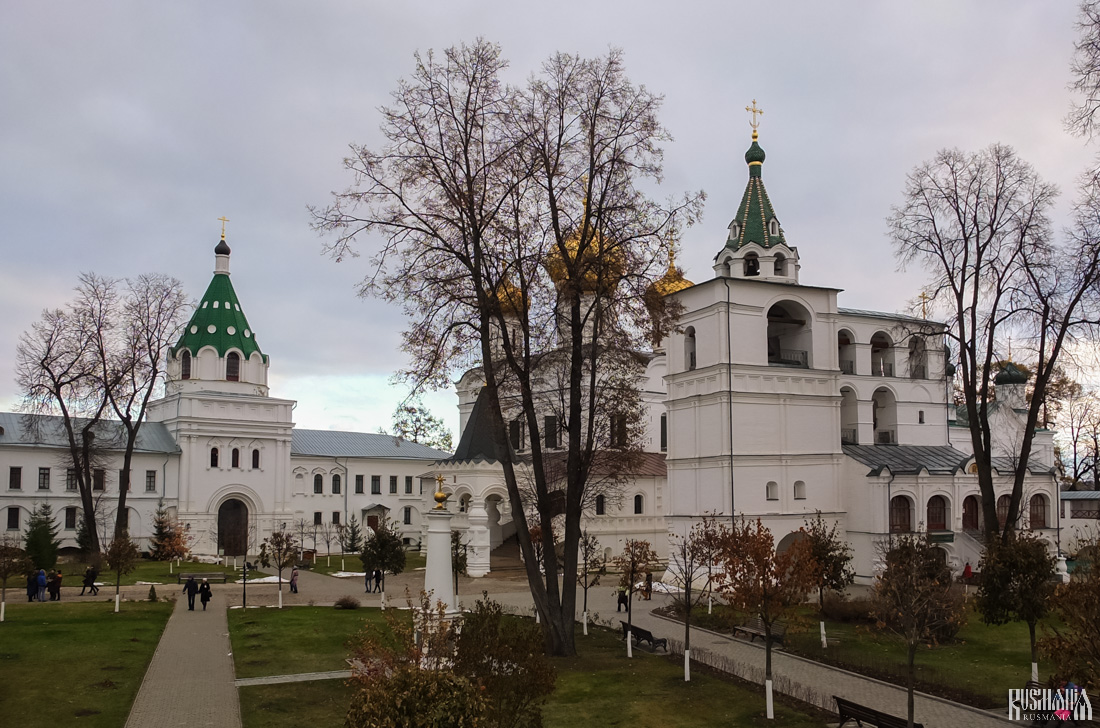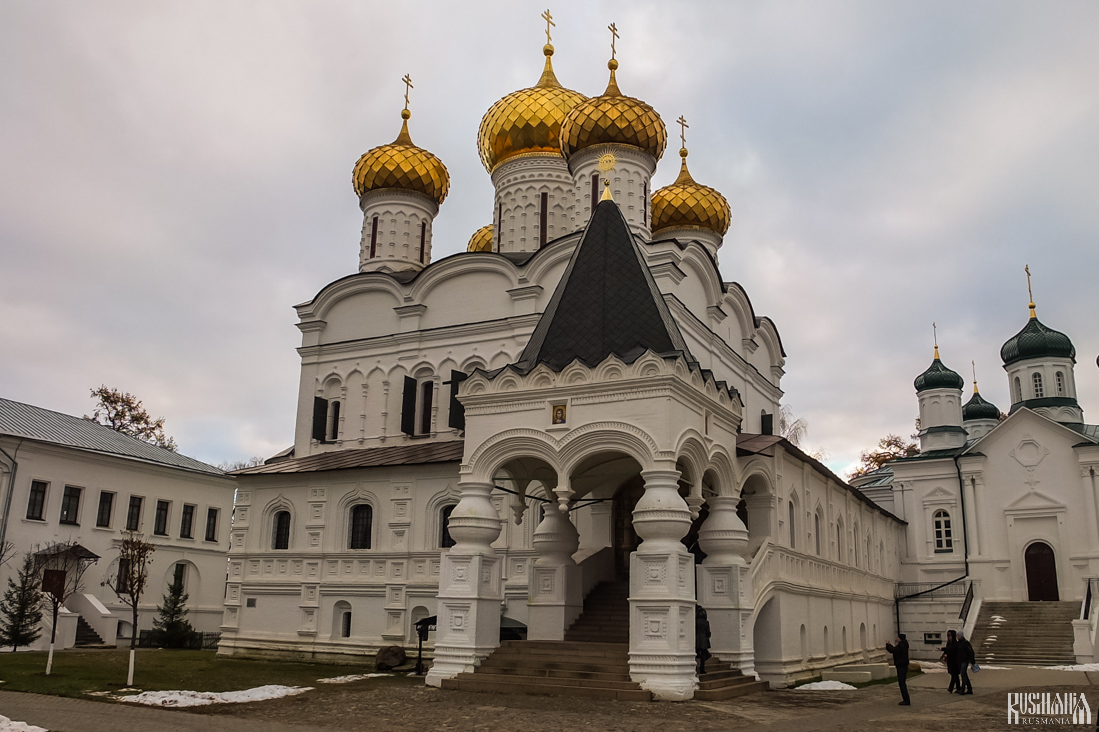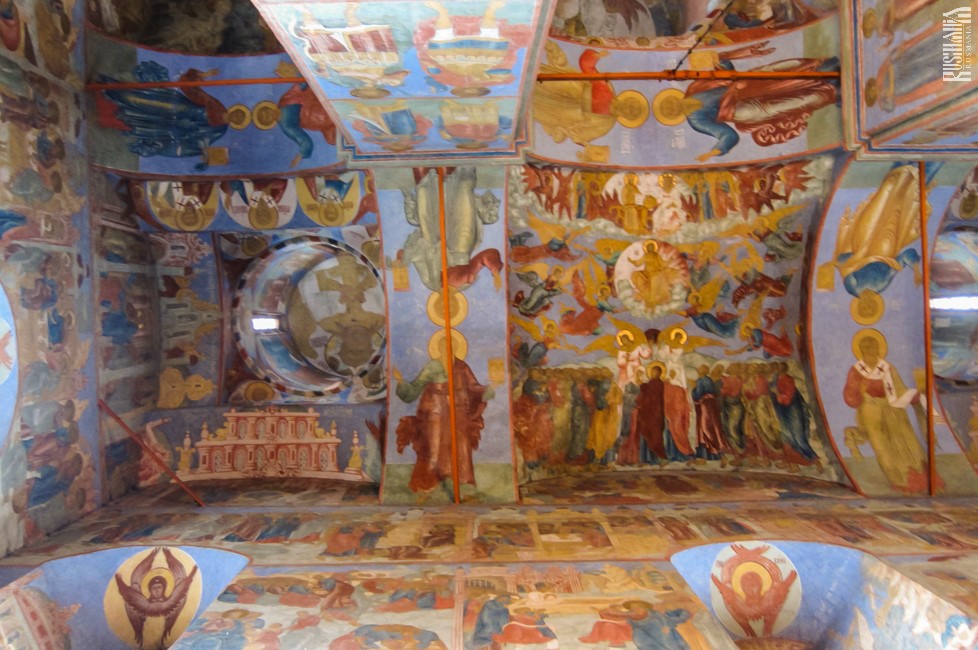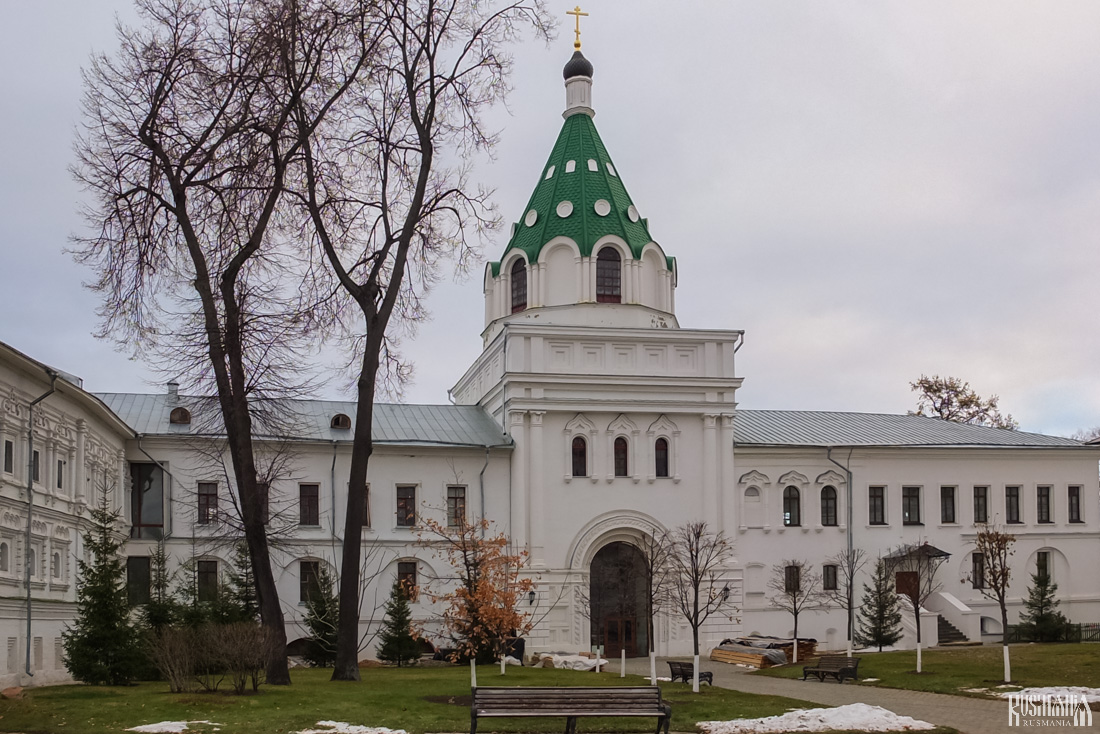West of the River Kostroma
Ipatievsky Monastery

The first mention of the Ipatievsky Monastery came in 1432 when Vasily II of Rus signed a peace treaty with Vasily Kosoy here. However it is believed the monastery was founded much earlier. One legend states that it was founded in approximately 1330 by a Tatar nobleman named Chet who entered the services of Ivan Kalita and adopted Christianity. On his way to Moscow, Chet became ill and rested where the River Kostroma flows into the Volga. In his dream he saw the Virgin Mary who promised to heal him if he builds a monastery. Chet returned to Kostroma and founded the Ipatievsky Monastery and he was healed as promised. Chet is said to be an ancestor of Boris Godunov, and in the second half of the 16th century Boris made gifts of land to the monastery as well as giving it funds to rebuilt it in stone and to surround it with stone walls and towers. During the Times of Troubles the monastery was captured in 1608 by supporters of the Second False Dmitri, but was liberated in 1609. In 1612 Mikhail Romanov arrived at the monastery and it was here that he was found by an embassy from Moscow to inform him he had been elected Tsar. As such the Romanovs saw the monastery as the cradle of their house and often visited it and gave it donations.

In 1809 the historian Nikolai Karamzim found an ancient chronicle at the monastery which contained invaluable information on the history of Southern Rus. Today the chronicle is known in English as the Hypatian Chronicle after the monastery. In 1913 Tsar Nicholas II visited the monastery as part of the celebrations in honour of the 300th anniversary of the House of Romanov. After the Revolution in 1919 the monastery was closed by the Soviets, the majority of its treasures were transferred to Moscow and some of its buildings were destroyed. However the monastery was preserved from 1958 onwards as the 'Ipatievsky Monastery' Kostroma State Historical and Architecture Museum-Reserve. In 2004, despite pleas from the museum-reserve, the monastery was returned to the Orthodox Church. Today the Russian Orthodox Church runs the site as both a working monastery and a museum. You need to pay to visit the exhibitions, but it is free if you just want to visit the Trinity Cathedral.
Trinity Cathedral

The monastery's main cathedral is the Trinity Cathedral. The original stone version was heavily damaged during the Times of Troubles and in 1650 Tsar Michael ordered it be rebuilt. Work on the cathedral was completed in 1652.

In 1685 Guri Nikitin, himself from Kostroma, led the work on decorating the interior of the cathedral with beautiful and colourful frescos. Today the cathedral's frescos are some of the best surviving examples of 17th century frescos and in addition to this its stunning iconostasis has also been preserved.
Ss Chrysanthus and Daria's Gate-Church

Between 1837 and 1863 the renowned architect Konstantin Ton worked on renovating the façade of the monastery viewed from across the River Kostroma. The centrepiece of this work was the tent-domed Ss Chrysanthus and Daria's Gate-Church which stood in the centre of the walls over the holy gates and is surrounded on both sides by the archimandrite's chambers. Ton also created the Nativity of the Virgin Mary Church within the monastery but this was destroyed in 1934.
Romanov Boyars Chambers

In 1858 Emperor Alexander II visited the Ipatievsky Monastery and ordered that the monastic cells where Mikhail Romanov lived with his mother be renovated as the Romanov Boyars Chambers in the 17th century style. Alexander II assigned the task to Fyodor Richter who had recently been charged with restoring the Romanov Chambers in Moscow. Richter finished his work in 1863 and although the whole project was criticised as having no historical value. Today the premises are used to hold an exhibition on the Romanov dynasty.
| Location | 1 Ulitsa Prosveschenia |
|---|---|
| Website | http://ipatievsky.ru/ |

 History
History